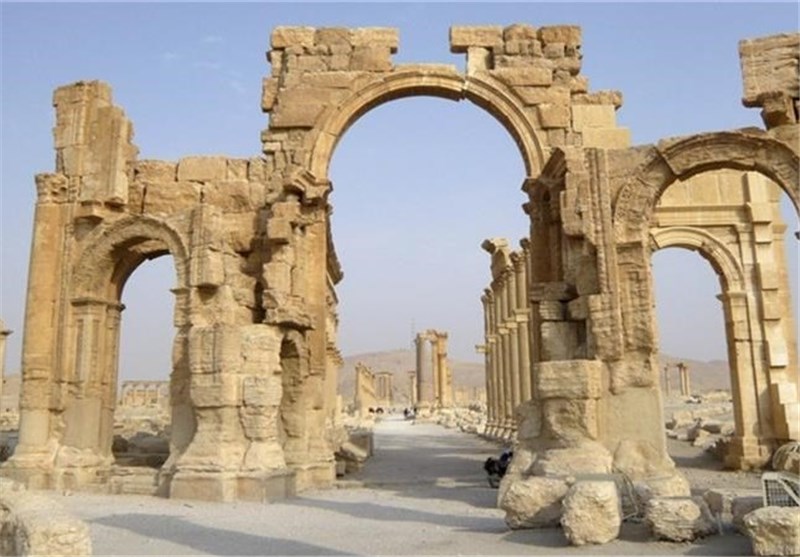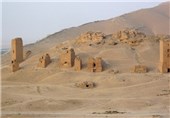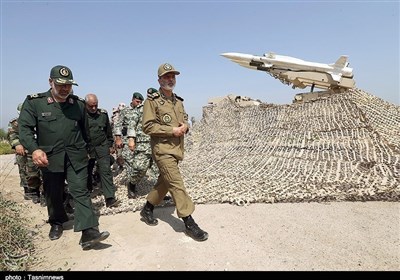ISIL Blows Up Arch of Triumph in Syria's Palmyra
TEHRAN (Tasnim) – The Islamic State in Iraq and Levant (ISIL) terrorist group destroyed the nearly 2,000-year-old Arch of Triumph in the ancient city of Palmyra, Syria's head of antiquities and sources have said.
The arch was one of the most recognizable sites in Palmyra, the central city affectionately known by Syrians as the "Bride of the Desert," which ISIL seized in May.
The monumental arch sat atop the famed colonnaded streets of the ancient city, which linked the Roman Empire to Persia and the East, Al Jazeera reported on Monday citing other agencies.
"We have received news from the site that the Arch of Triumph was destroyed yesterday [Sunday]. ISIL bobby-trapped it several weeks ago," antiquities director Maamun Abdulkarim told the AFP news agency.

"This is a systematic destruction of the city. They want to raze it completely."
"They want to destroy the amphitheatre, the colonnade. We now fear for the entire city," he added, calling on the international community to "find a way to save Palmyra".
The so-called Syrian Observatory for Human Rights said ISIL blew up the arch but left the colonnades in place.
'Intolerable crime'
Palmyra's sprawling Roman-era complex, which also includes remains of temples to local gods and goddesses, has been under attack from the ISIL since they seized the site earlier this year.
ISIL's self-declared "caliphate," argues such ancient relics promote idolatry and says they are destroying them as part of their purge of paganism.
However, they are also believed to sell off looted antiquities, bringing in significant sums of cash.
In recent weeks, ISIL blew up two famed temples in Palmyra.
Satellite images showed the temples, each nearly 2,000 years old, reduced to rubble. Three ancient tower tombs were also eradicated.
The temple of Baalshamin, a structure of giant stone blocks several stories high fronted by six towering columns, was dedicated to a god of storm and rain — the name means literally "Lord of the Heavens."
The even larger and slightly older Temple of Bel, dating back to 32 AD, was a unique merging of ancient Near Eastern and Greco-Roman architecture.
It was dedicated to the Semitic god Bel and is considered one of the most important religious buildings of the first century.
ISIL's targeting of priceless cultural artifacts has sparked global outrage and accusations of war crimes.
UNESCO, the UN heritage agency, has called the destruction an "intolerable crime against civilization".
Heritage sites have been damaged constantly since Syria's war began. Syrian government officials say they have transferred about 300,000 artifacts to safe places in recent years, including from ISIL-controlled areas.
In addition to pre-Islamic sites, the group has also targeted churches, mosques and museums.
Before the outbreak of Syria's war in March 2011, Palmyra's UNESCO heritage site was one of the top tourist attractions in the Middle East.





